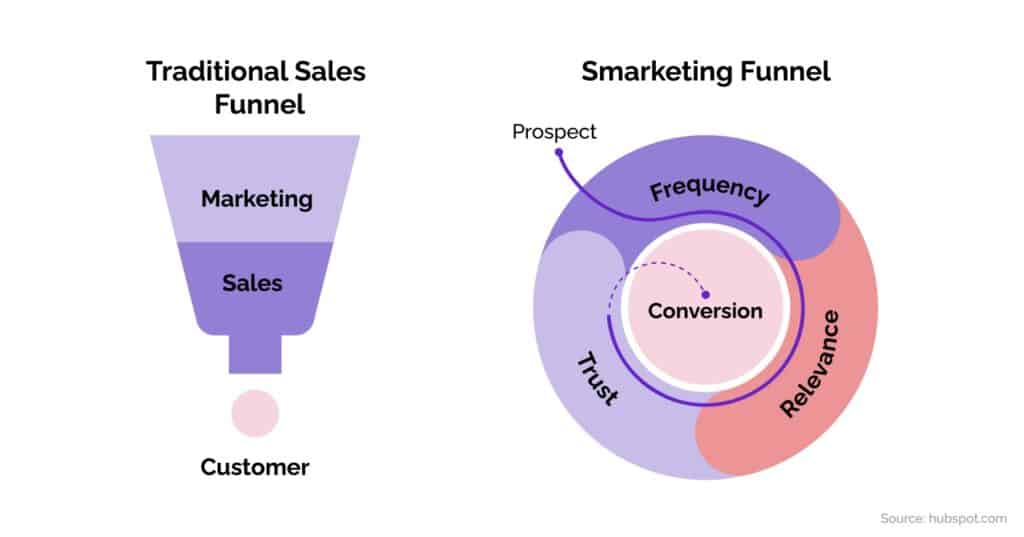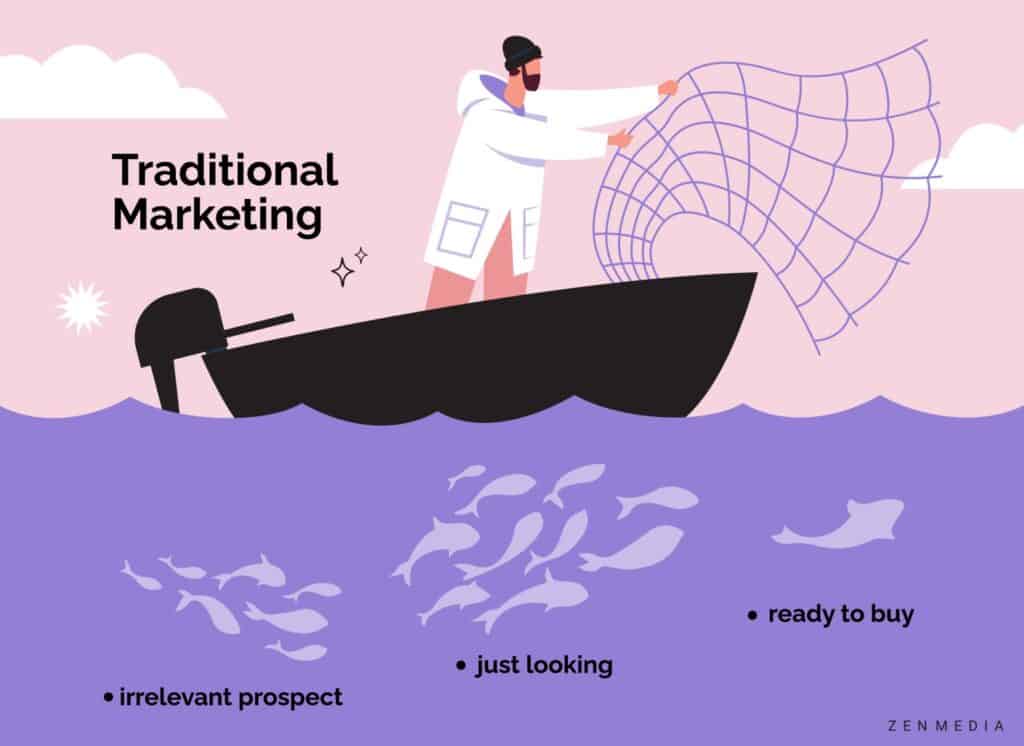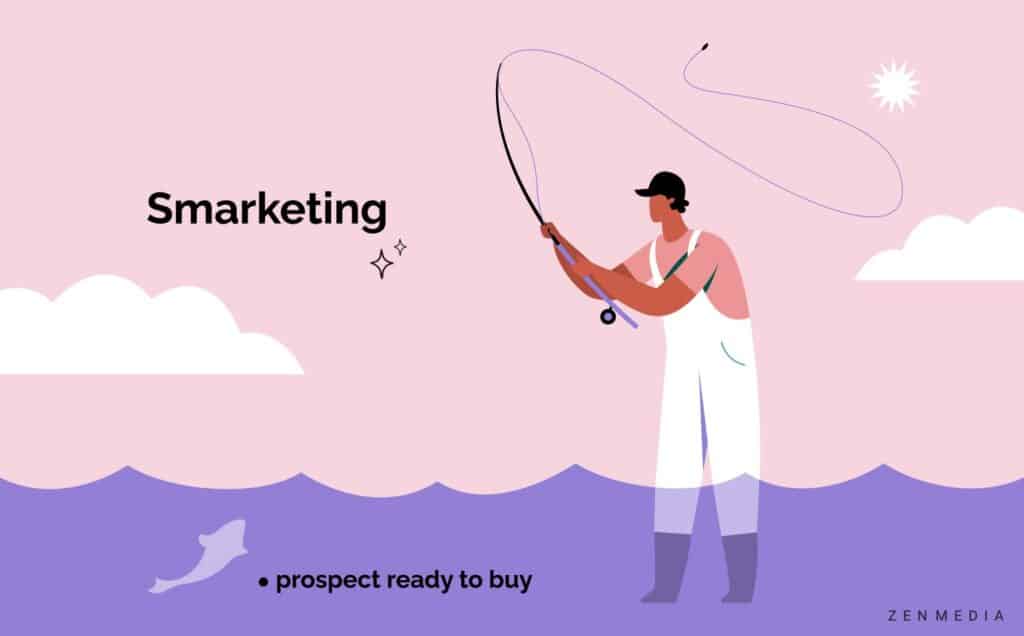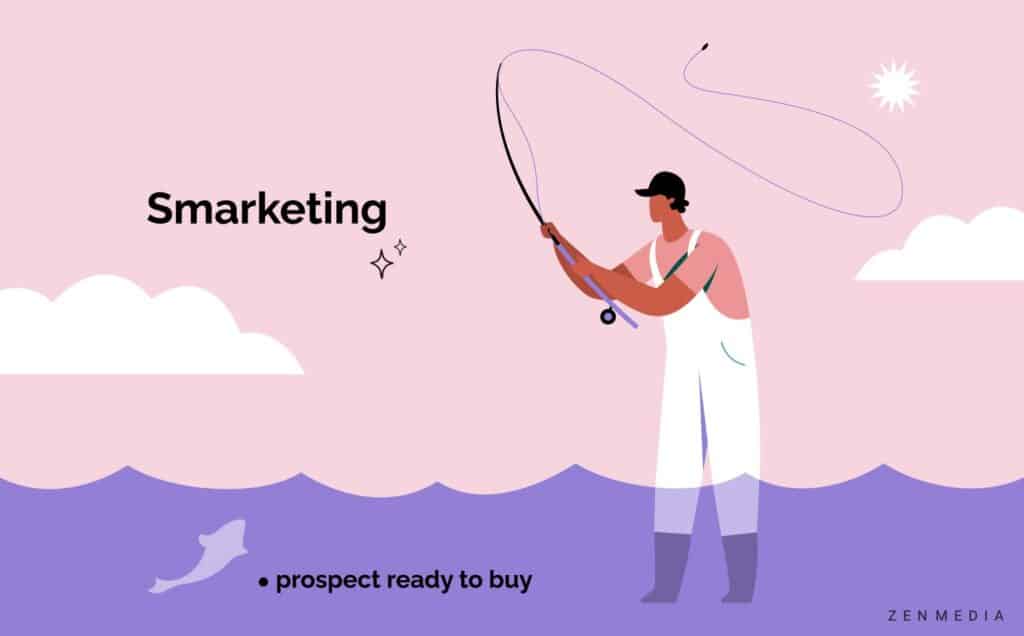Oh no. Another newfangled piece of jargon.
While smarketing may sound like a weird new dance move, we promise it’s not the latest TikTok trend.
Smarketing is a business approach that integrates sales and marketing efforts. It leads to a more aligned and efficient approach to reaching business goals. And in today’s rapidly changing business landscape, it is becoming increasingly important as companies strive to stay ahead of the competition and meet customers’ evolving needs.
Whether you’re a B2B business leader, marketer, or salesperson, smarketing can help drive growth and improve results for your organization.
Related Reading: Actionable strategies to make the most of B2B sales and marketing in 2023
What is smarketing?
Smarketing refers to aligning and integrating sales and marketing efforts to maximize results and achieve common goals. This approach involves collaboration between the sales and marketing teams and a shared understanding of customer needs and behavior.
You might be thinking: Isn’t this what marketing and sales are supposed to do anyway? They’re two departments within a single company. They should collaborate toward a shared goal! That’s just good business.
But smarketing is more than just collaboration. Smarketing alters the customer journey from a straightforward trip down the sales funnel to a circular experience that encourages long-term relationships.

This approach allows companies to break down silos, share information and data, and make more informed decisions. Instead of casting the widest net to reel in prospects, hoping that a handful will convert to customers, smarketing fishes for qualified leads that are near-ready to make a purchase, delivering better results overall.
To play out the fishing analogy further, think about it this way: regular marketing is equivalent to fishing by throwing a net over the side of the boat.

Smarketing is more akin to fly fishing: you cast a strategic line into a predetermined stream where you know the fish you want will undoubtedly be swimming.

Smarketing and sales enablement
What’s the difference between smarketing and sales enablement?
Smarketing and sales enablement are similar in their focus on improving sales teams’ performance, but they are different in their scope and approach.
Smarketing involves direct collaboration between the sales and marketing teams, as well as a shared understanding of customer needs and behavior. The objective of smarketing is to improve the customer experience, which will result in growth.
Sales enablement, on the other hand, is a strategy focused on empowering sales teams with the tools, knowledge, and resources they need to be more effective and efficient in their role. This can include training, content creation, and technology solutions designed to help sales teams more effectively engage with customers and close deals—and yes, smarketing can definitely be a part of sales enablement.
The objective of sales enablement is to improve sales teams’ performance and increase revenue; smarketing is one sales-enablement tactic.
Related Reading: What is sales-enabled PR?
Advantages of smarketing
Smarketing leads to a more cohesive and efficient approach to reaching business goals. This increased collaboration results in a better understanding of customer needs and behavior, leading to more effective digital marketing campaigns and sales strategies. With smarketing, both sales and marketing teams work towards common objectives, leading to a more aligned and cohesive approach to reaching business goals, including an improved customer experience.
And this approach benefits the bottom line by making sales and marketing more efficient.
With a smarketing approach, companies will spend less time filtering through unqualified leads or trudging along extended B2B sales cycles. Even further, smarketing enables companies to invest in prospects and existing customers that have a higher likelihood of converting. This goes back to that fly fishing analogy. With a smarketing approach, the marketing and sales team are closer to meeting their intended goals from the start because they are in the best position to capture qualified leads and turn them into happy customers. Instead of capturing the interest of a large audience (only to find that few were ready to convert), brands can spend more time on relationships that will yield lasting results and have increased lifetime value.
How does smarketing work?
Here’s an example: In a traditional marketing and sales strategy, the marketing team typically handles the company’s website without much collaboration with sales. But this is detrimental because the sales team has a clear understanding of the questions their prospects are asking as they move down the sales funnel—the very questions that prevent prospects from converting.
Smarketing reduces this long process of individual evaluation by enabling the sales team to influence the messaging and strategies marketing uses to reach people. In this way, the B2B buyer journey is streamlined; by the time buyers make it to the sales team, they have the majority of their questions answered and are ready to make a purchase.
And this is incredibly important for today’s B2B companies. Gartner found that though the modern B2B customer journey is divided into multiple steps, prospects spend the most time conducting independent research online by themselves. This happens long before they meet with the sales team or interact with a representative. Companies that take a smarketing approach will more readily succeed because they will have anticipated their customers’ needs and reached prospects with the evidence of the brand’s expertise early on in their journey.

How to turn your sales and marketing into smarketing
Build a strong relationship between marketing and sales: To effectively implement smarketing, it is important to establish a strong relationship between the marketing and sales teams. Regular communication and check-ins between the marketing and sales teams are essential for the success of smarketing. This can be achieved through regular team meetings, cross-functional training, and regular updates on shared goals and metrics. By fostering open communication, organizations can ensure that their marketing and sales efforts remain aligned and effective.
B2B marketing and sales teams should collaborate and identify the following:
- The qualities of qualified leads
- The most important channels through which to reach those leads
- The underlying problems or challenges prospects face
- And the messaging that will win conversions
Develop shared metrics and KPIs: The first step in developing shared metrics and KPIs is to define your goals and objectives. What do you hope to achieve through your smarketing efforts? What are the key metrics and KPIs that you will use to track progress and measure success? By defining your goals and objectives, you can ensure that your smarketing efforts are aligned with your overall business strategy and that you have a clear roadmap for success. Then, you can develop shared metrics and KPIs for both the marketing and sales teams that are in alignment with one another and the overall business goals. These metrics should be regularly reviewed and updated.
Incorporate technology and data to inform decision-making: Technology and data play a critical role in smarketing, allowing organizations to understand customer behavior and preferences more clearly. Invest in the right technology solutions—such as customer relationship management (CRM) systems, marketing automation platforms, and data analytics tools—to help you make more informed decisions and drive greater efficiency. By incorporating these tools, companies can make more informed decisions and improve the efficiency and effectiveness of their marketing tactics and sales efforts.
Provide regular training and support: Both the marketing and sales teams need to be equipped with the knowledge and skills they need to be successful. Provide regular training and support, including cross-functional training and workshops, to help both teams stay up to date on industry best practices and develop the skills they need to achieve their goals.
Continuously evaluate and refine your strategy: Smarketing is an ongoing process that requires continuous evaluation and refinement to be effective. Regularly review your metrics and KPIs, and make adjustments to your strategy as needed to achieve your goals. Be open to feedback and new ideas, and always be willing to make changes that will drive greater success.
Related Reading: Why Your B2B Marketing Needs Sales Collateral
AI in Smarketing
As we step into 2024, technological advancements continue to reshape the landscape of smarketing.
AI and machine learning are revolutionizing how companies approach customer data analysis and predictive modeling. These technologies are enabling more precise targeting and personalization in marketing efforts.
By analyzing past customer data and market trends, these tools can forecast future customer behaviors and purchasing patterns. This foresight enables more strategic planning and targeted marketing efforts, ultimately leading to higher conversion rates and customer retention.
Automation tools are now capable of handling routine tasks like lead scoring and customer segmentation, freeing up valuable time for sales and marketing professionals to focus on more strategic aspects of their roles, like building relationships and closing deals. Automation also ensures a more seamless and consistent customer journey as it minimizes the chances of human error and ensures timely follow-ups.
Another AI ally? Chatbots and virtual assistants.
These tools are being employed to enhance customer engagement and support. Powered by AI, they can handle initial customer inquiries, provide personalized product recommendations, and even assist in the lead qualification process. This not only improves the customer experience, but also provides sales teams with better-qualified leads.
In 2024, these technologies are no longer optional tools; they are essential components of a successful smarketing strategy. And they are reshaping how sales and marketing teams collaborate, making processes more efficient, data-driven, and customer-centric.
Why smarketing is critical for success in 2024 and beyond
Evolving customer needs and expectations require companies to stay up to date with the latest trends and customer preferences. Smarketing achieves these goals and helps companies stay ahead of the competition by aligning sales and marketing efforts to deliver a more seamless and effective customer experience.
And with the increasing number of businesses vying for customers’ attention, competition is increasingly intense. That flawless user experience is the future of marketing and sales—or smarketing. By embracing this approach, companies can improve efficiency, drive growth, and achieve greater success in 2024 and beyond.
Smarketing represents a major shift in the way companies approach marketing and sales. By aligning and integrating sales and marketing efforts, organizations can more effectively reach their target audience, improve the customer experience, and drive growth. Embracing smarketing in 2024 and beyond can help companies stay ahead of the curve, achieve greater success, and thrive in an ever-changing business landscape.
Ready to get your sales and marketing in alignment? Let’s talk.




